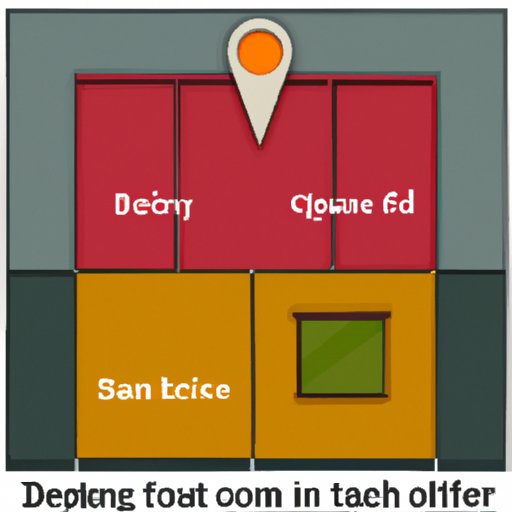Introduction
Starting a boutique business can be an exciting adventure. It’s an opportunity to make money while doing something you love. But it’s also a lot of work. From finding the right location to selecting suppliers, there are many things to consider. This article will provide an overview of the steps to starting a boutique business, including how to identify your target market, research competition, develop a business plan, find the right location and design the store layout, and select suppliers.
Outline the Steps to Starting a Boutique Business
Starting a boutique business involves a lot of planning and preparation. To ensure success, it’s important to understand all the steps involved in launching a business. The following outlines the key steps to starting a boutique business:
- Identify the target market
- Research competition and analyze their strategies
- Develop a comprehensive business plan
- Find the right location and design the store layout
- Select suppliers and create a product line
Identify the Target Market for Your Boutique
The first step in starting a boutique business is to identify the target market. Knowing who your customers are and understanding their needs and wants is essential for developing an effective marketing strategy. To identify the target market, you should:
- Determine who your customers are
- Understand your customer’s needs and wants
To determine who your customers are, consider the demographics such as age, gender, income level, and interests. You should also consider geographic location. Understanding your customer’s needs and wants will help you create products and services that meet their expectations.

Research Your Competition and Analyze Their Strategies
Once you have identified your target market, it’s time to research your competition. Knowing what other businesses are doing in your area will help you create a unique and successful business model. To research your competition and analyze their strategies, you should:
- Identify your competitors
- Analyze their pricing, products, and promotions
Knowing who your competitors are and what they are offering is essential for staying ahead of the competition. Analyzing their pricing, products, and promotions will give you insight into what works and what doesn’t. You can then use this information to develop your own competitive strategy.
Develop a Comprehensive Business Plan
Creating a comprehensive business plan is an essential step in starting a boutique business. A business plan will help you define your goals and objectives, estimate start-up costs and financing requirements, and create a marketing plan. To develop a comprehensive business plan, you should:
- Define your goals and objectives
- Estimate start-up costs and financing requirements
- Create a marketing plan
Having a clear vision of what you want to accomplish and how you plan to get there is critical for the success of your business. Estimating start-up costs and identifying potential financing sources will ensure that you have enough capital to get your business off the ground. Creating a marketing plan will help you reach your target audience and generate sales.

Find the Right Location and Design the Store Layout
Finding the right location for your boutique is essential for success. Consider factors such as foot traffic, accessibility, parking, and visibility when selecting a location. Once you have found the perfect spot, you should design the store layout and create an attractive and functional space. To find the right location and design the store layout, you should:
- Consider location, foot traffic, and accessibility
- Create an attractive and functional store design
The right location can make or break your business. Make sure to choose a spot that is accessible and visible. Once you have chosen the location, create a store design that is both attractive and functional. Use fixtures and displays to showcase your products and create an inviting atmosphere.

Select Suppliers and Create a Product Line
Once you have a business plan, location, and store layout, it’s time to select suppliers and create a product line. Identifying potential suppliers and creating an inventory management system are essential for managing your business. To select suppliers and create a product line, you should:
- Identify potential suppliers
- Create an inventory management system
Identifying potential suppliers and evaluating their prices and services will help you find the best supplier for your needs. Creating an inventory management system will help you keep track of your products and manage your inventory efficiently.
Conclusion
Starting a boutique business requires careful planning and preparation. From identifying the target market to selecting suppliers, there are many steps involved. This article has outlined the key steps to starting a boutique business, including how to identify the target market, research competition, develop a business plan, find the right location and design the store layout, and select suppliers. With the right preparation and dedication, you can be successful in launching your own boutique business.
(Note: Is this article not meeting your expectations? Do you have knowledge or insights to share? Unlock new opportunities and expand your reach by joining our authors team. Click Registration to join us and share your expertise with our readers.)
